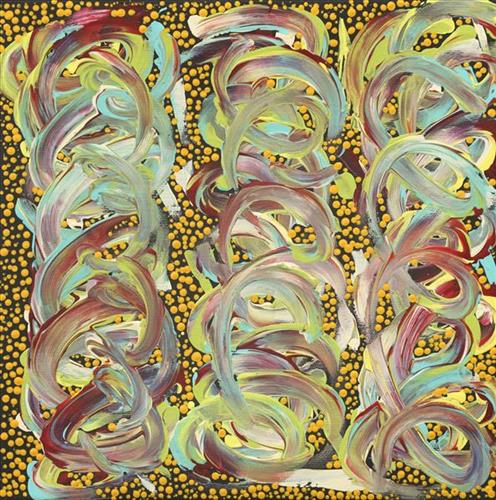111582336985
Palpirr / Parlpirr / Parlpinypa / Jiparri / Kumpulpija (Fitzroy Wattle, Pindan Wattle, Fish Hook Wattle, and Shiny Leaved Wattle)
Palpirr, otherwise known as parlpirr, parlpinypa, jiparri, and kumpulpija (fitzroy wattle, pindan wattle, fish hook wattle, and shiny leaved wattle), is an acacia shrub with long, narrow, olive coloured leaves. It produces soft, spiked golden flowers before giving way to slightly curved oblong seed pods. Once dried in hot ashes, the seeds can be ground to a paste and eaten with caution, as too much of the paste causes headaches. The plant also has medicinal properties; its leaves can be chewed and placed on burns to aid healing.
During the pujiman (traditional, desert dwelling) period, Martu would traverse very large distances annually in small family groups, moving seasonally from water source to water source, and hunting and gathering bush tucker as they went. Whilst desert life has moved away from mobile hunter-gatherer subsistence throughout the course of the twentieth century, bush tucker continues to be a significant component of the modern Martu diet. Hunting and gathering bush tucker remains equally valuable as an important cultural practice that is passed on intergenerationally. Though hunting and gathering implements have been modernised, methods of harvesting, tracking and the use of fire burning to drive animals from their retreats are still commonly practiced today.



